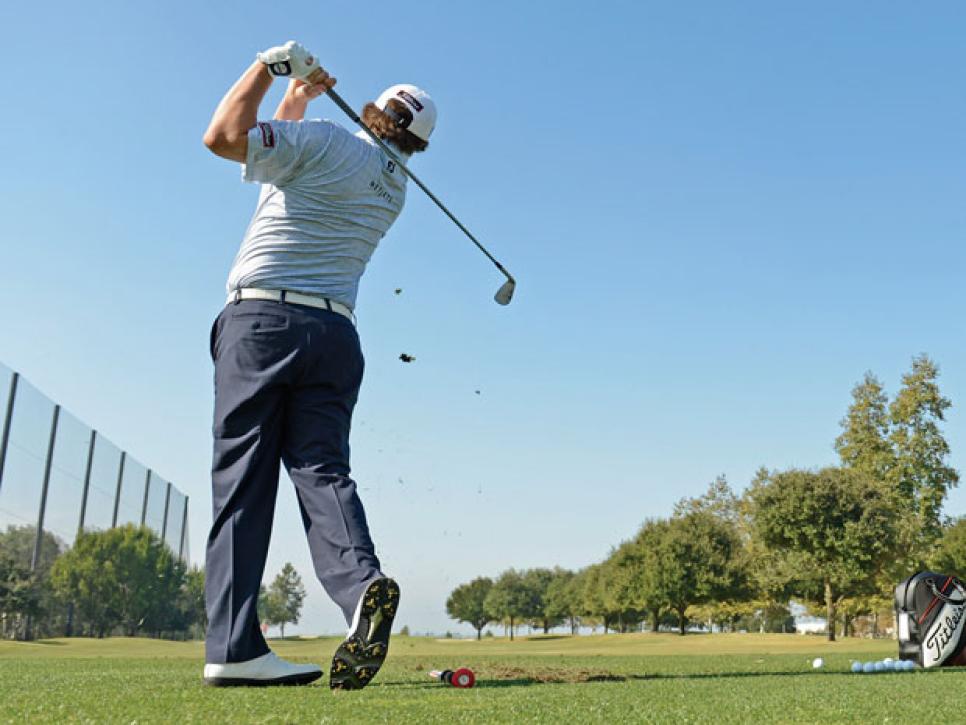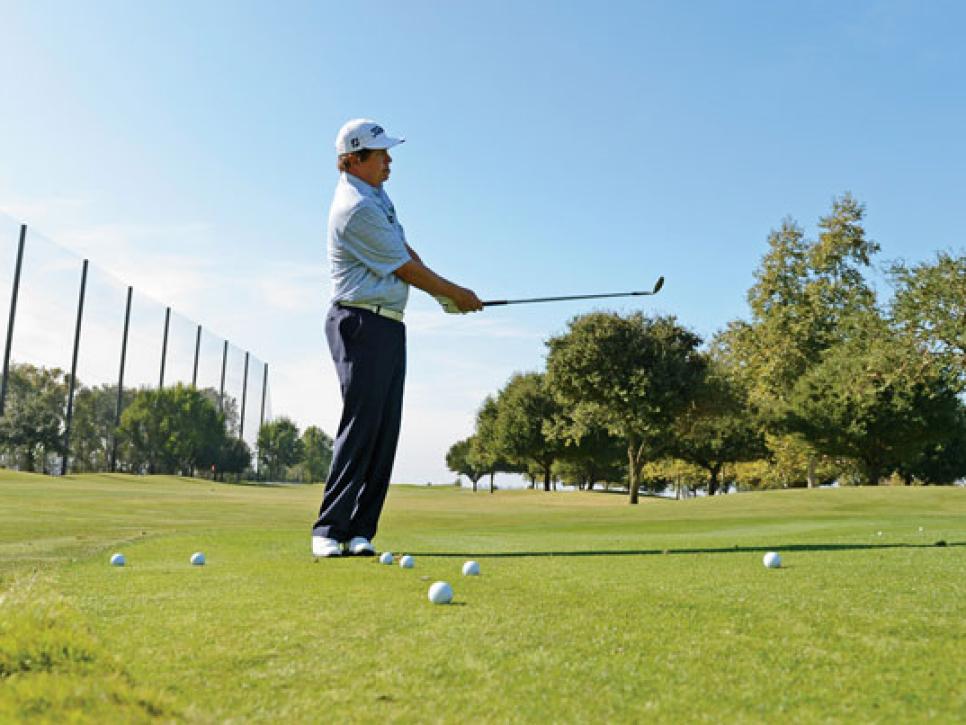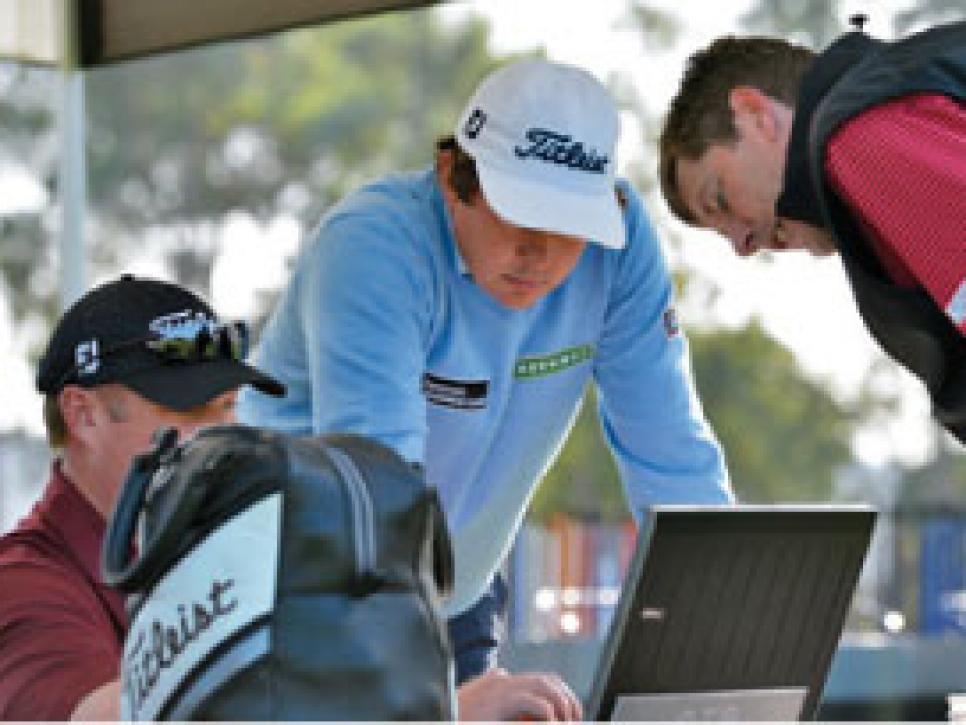Analyze This

Arriving for an equipment testing session at Titleist's Oceanside, Calif., facility in late November, Jason Dufner looks every part The Duf--hair pushing out from under his cap, hands and arms filled with shirts and notepads, all in a discombobulated manner.
"OK, exactly what are we doing?" he asks. What Dufner is doing is testing Titleist's latest version of its Pro V1 golf ball. What we are doing is shadowing his every move. Dufner's persona might lead some people to believe that his test sessions are informal, laid-back affairs: Hit a few balls, see how they fly and decide whether to switch. Turns out, that's not really the case. Dufner is maniacally analytical. A facts-and-figures freak who uses numbers to get to the answer every golfer wants to know: What's the best equipment for me?
"Jason looks at the numbers after every swing," says Fordie Pitts, Titleist's tour rep for golf balls. "There's not a lot of gray area with him."
There's not a lot of gray area because Dufner writes everything down. In his notebooks are sheets of paper where he jots down an array of figures, with special attention paid to launch angle, spin rate, peak height and landing angle.
"Looking at the data helps me become comfortable on the course," Dufner says. "Knowing my equipment is dialed in gives me an edge."
Although his swing has the familiar waggle of a dog waving its tail, on this day Dufner's normally rhythmic and efficient motion is a touch off, with his angle of attack into the ball steeper than normal. Dufner says he's "leaning into it a little." Not wanting to compromise the data, he hits balls until the problem is fixed and then re-hits the clubs he has already gone through, replacing the old numbers with the new.
Dufner's testing process for golf balls is straightforward: Starting with the pitching wedge and working his way up the bag, he hits three to five balls with each model (in this case, his current ball--the 2009 Pro V1--and the new 2013 version), then averages the numbers. Although Dufner is jovial and talkative before and after the testing session, during the process he's mostly serious. Pitts is only a couple of feet away, but there is little interaction except to ask about differences in spin and compression. Dufner also wants to know the cover hardness and dimple patterns. This isn't just curiosity--it's important data he considers.
"Jason doesn't need a lot of hand-holding," says Pitts, who cleans the grooves after each swing because dirt-filled grooves can throw the numbers off. Between sets of swings, Dufner, a dip of wintergreen chewing tobacco between lip and gum, purposefully logs the information. Afterward, he "normalizes" the numbers to take the elements (wind, temperature, humidity, etc.) out of the equation.

"In high school and college, I had no idea what I was doing with equipment," Dufner says. "I went by feel, or if it looked good or felt good. Now I prefer data because it tells me what is actually happening. The launch monitor doesn't lie."
After Dufner finishes working with his irons, he concludes that although both balls are similar in height, spin and ball flight, the 2013 Pro V1 has a tighter dispersion pattern for distance and accuracy. For a ball test, Dufner spends remarkably little time hitting drivers and even less time around the green--no more than 10 minutes or so with chips and pitches struck with the nonchalance of a man who has made up his mind. "I'm just checking to make sure there is nothing out of the ordinary in terms of feel or spin," Dufner says. Asked what he likes about the new ball compared to his previous one, Dufner knocks a pitch shot into the cup and deadpans, "Well, it flies into the hole pretty good."
Still, despite better numbers for the new Pro V1, Dufner the data animal did what so many amateurs and professionals alike tend to do: He stayed with what makes him comfortable. For Dufner, that meant starting the 2013 season using the model he used in 2012 to win two events and nearly $5 million to climb into the top 10 on the World Golf Ranking.
Apparently, of all the numbers gathered, those were the ones he took into consideration the most.
TWO TIPS FOR SPIN RATE AND LAUNCH ANGLE

During equipment testing Jason Dufner uses a pair of interesting guidelines. For spin he seeks 1,000 revolutions per minute multiplied by the number on the bottom of the club. In other words, the ideal result on a 9-iron is 9,000 rpm, for an 8-iron it's 8,000 and so on. Dufner also looks for a launch angle that is half the loft of the club. So if a pitching wedge has 47 degrees of loft, Dufner wants a launch angle of 23.5 degrees. "It's not a hard-and-fast rule," he says. "But it helps."